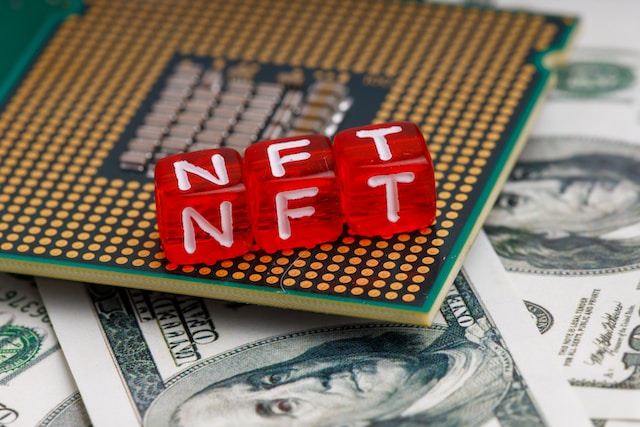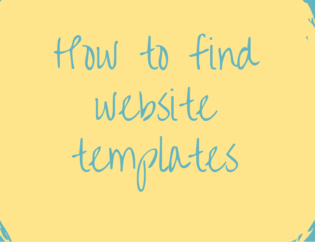
NFTs (Non-Fungible Tokens) have gained significant popularity in recent times, creating a new ecosystem for digital art, collectibles, and other unique digital assets. The unique characteristics of NFTs make them highly valuable and sought after, and businesses are looking for ways to capitalize on this new trend. Developing an NFT marketplace is one-way businesses can benefit from this new trend. In this blog post, we will explore how to develop an NFT marketplace.
Before diving into the development process, it is essential to understand what an NFT is and how it works. In simple terms, an NFT is a unique digital asset that is verified on a blockchain network, which provides proof of ownership and authenticity. The blockchain network ensures that the asset’s ownership and transaction history are recorded and are transparent, making it easy to track and verify the asset’s authenticity.
Developing an NFT Marketplace
The development of an NFT marketplace requires a deep understanding of blockchain technology, smart contracts, and security protocols. It also requires collaboration with artists, creators, and collectors who will provide the assets to be sold on the marketplace. Here are the steps to develop an NFT marketplace.
Define the Purpose of the Marketplace
Before developing the marketplace, it is essential to define its purpose. What types of NFTs will the marketplace sell? Who is the target audience? How will the marketplace generate revenue? Answering these questions will help define the marketplace’s features and functionality and the overall design.
Choose the Blockchain Network
The choice of blockchain network is crucial to the development of an NFT marketplace. Ethereum is the most popular blockchain network for NFTs due to its smart contract capabilities and its support for ERC-721 and ERC-1155 token standards. However, other blockchain networks like Binance Smart Chain and Polkadot also support NFTs.
Choose the Smart Contract
Smart contracts are self-executing contracts that automatically enforce the terms and conditions of a contract. For NFTs, smart contracts are essential for managing ownership and transactions. There are several smart contracts available for NFTs, including OpenZeppelin and Truffle.
Design the Marketplace
The marketplace’s design should be simple and intuitive, making it easy for users to navigate and find the NFTs they are looking for. The marketplace’s design should also be customizable to suit the brand’s aesthetics and preferences.
Develop the Smart Contracts
Once the smart contract is chosen, it is time to develop the smart contract code that will manage the NFTs’ ownership and transactions. The smart contract code will also specify the token standards to be used, the number of tokens to be created, and the pricing model.
Develop the User Interface
The user interface is the front end of the marketplace that users will interact with. It should be designed to make it easy for users to browse and purchase NFTs. The user interface should also provide information about the NFTs, such as their description, pricing, and transaction history.
Integrate Payment Systems
To sell NFTs, the marketplace must integrate payment systems that accept cryptocurrency payments. The most popular cryptocurrency payment systems are Coinbase Commerce and BitPay. It is also essential to integrate a wallet service that enables users to store their NFTs securely.
Develop Security Protocols
Security is critical when developing an NFT marketplace. The marketplace should implement security protocols to protect users’ data and prevent fraud. These protocols include multi-factor authentication, SSL encryption, and DDOS protection.
Collaborate with Artists and Creators
The marketplace’s success depends on the quality of the NFTs it sells. It is crucial to collaborate with artists and creators to provide high-quality NFTs that will attract buyers. The marketplace should provide tools for artists and creators to upload and manage their NFTs, set prices, and track their sales.
Test and Launch
Before launching the marketplace, it is crucial to test it thoroughly to ensure that it is working correctly and all features are functioning as expected. Testing should include user testing, security testing, and performance testing. Once the marketplace passes all tests, it is ready for launch.
Promote the Marketplace
Once the marketplace is launched, it is essential to promote it to attract buyers and sellers. Marketing strategies can include social media advertising, email marketing, influencer marketing, and search engine optimization. The marketplace should also have a dedicated blog that provides updates on new NFTs, featured artists, and marketplace news.
NFT Marketplace Features
To create a successful NFT marketplace, it is essential to include features that make it easy for users to buy and sell NFTs. Here are some features to consider.
- Browse and Search Functionality: The marketplace should provide easy browsing and search functionality that allows users to find NFTs based on various criteria, such as artist, category, or price.
- NFT Details and Description: Each NFT should have a detailed description that includes information such as the artist’s name, the asset’s history, and the ownership status.
- Auction and Buy-It-Now Options: The marketplace should provide options for buyers to bid on NFTs or purchase them outright.
- Creator Tools: The marketplace should provide tools for creators to upload, manage, and sell their NFTs, set prices, and track sales.
- Secure Payment Options: The marketplace should provide secure payment options that accept cryptocurrency payments.
- Wallet Integration: The marketplace should integrate with wallet services that allow users to store their NFTs securely.
- Transaction History: The marketplace should provide transaction history for each NFT, allowing buyers to track their ownership history.
- Feedback and Rating System: The marketplace should provide a feedback and rating system that allows buyers and sellers to rate each other based on their transaction experience.
Conclusion
Developing an NFT marketplace requires a deep understanding of blockchain technology, smart contracts, and security protocols. The marketplace’s success depends on the quality of the NFTs it sells, the user experience, and the marketing strategy. With the growing popularity of NFTs, developing an NFT marketplace can be a lucrative business opportunity for those with the right skills and knowledge. By following the steps outlined in this blog post, businesses can develop an NFT marketplace that provides value to both creators and collectors.










